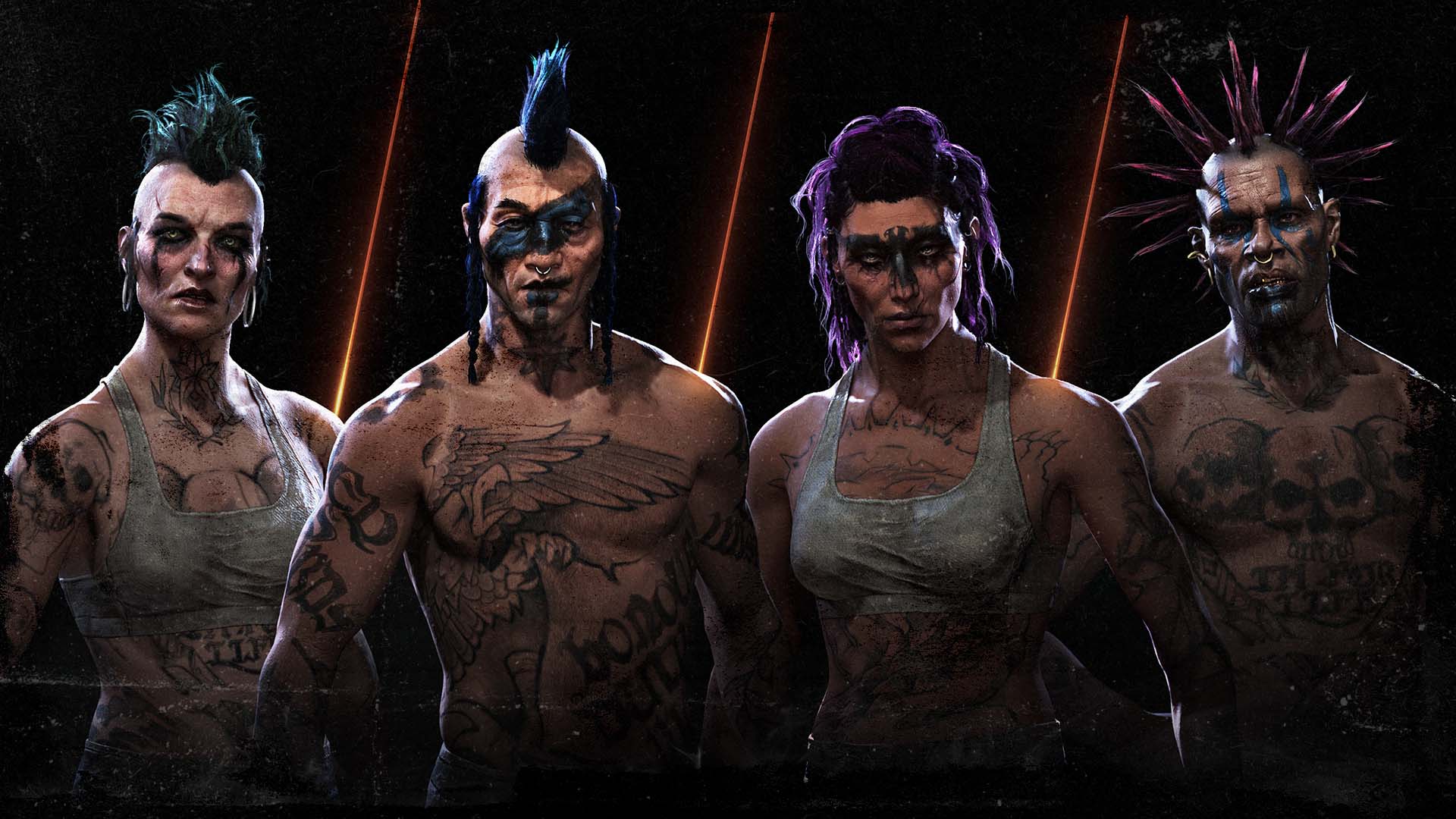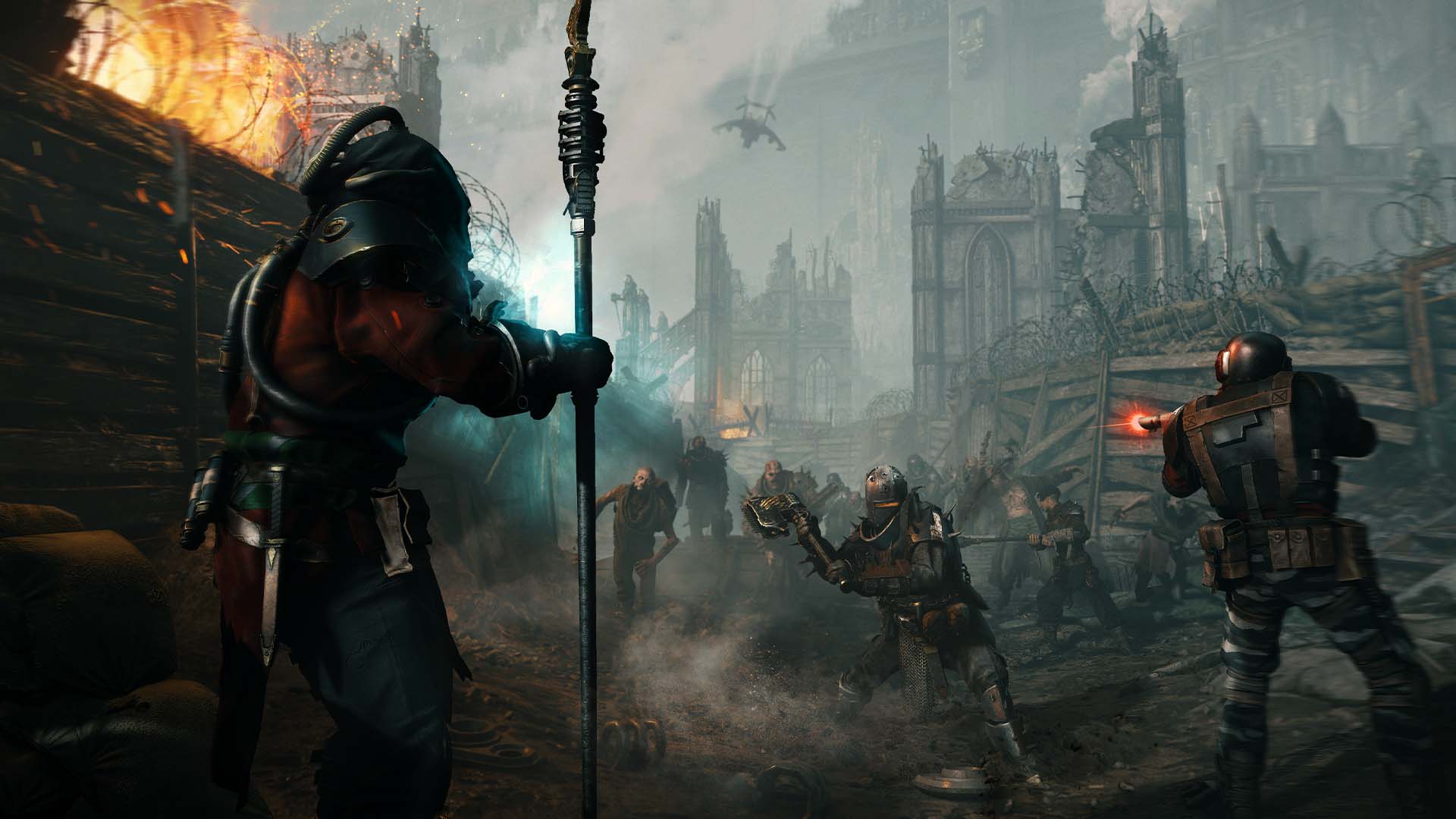Hello Devoted Rejects!
My name is Mats Andersson, also known as the resident Combat guy, Lead Combat Designer or just “Ratherdone” around the interwebs. I’d like to tell the story of the Darktide team's new take on classes and all the player choice and build availability that comes with it. This update is the result of a wide collaboration throughout the project as changing the core of what defines a player character has far-reaching implications on many parts of the game.
First off, we’ve always looked at Darktide as a game where you define your own character and play style. Much more so than in our previous tide-games. The idea that we’d be less prescriptive in the way we present who you play always has some friction with the class system. It is just natural that presenting a class, full with loadout restrictions, abilities and talent packages, comes with a heavy lore-package and a specific “you’re choosing to play THIS GUY”. We wanted to change that. We wanted to make the character creation stretch further into build choices and loadout configurations. We wanted you to be able to pick and choose and define your own main character using any and all combinations of gameplay and cosmetic choices available. The whole “forge your own narrative” taken to a very personal level.
Now, we also wanted to just widen the available builds and play styles. So for those of you who aren’t really that heavy into the lore or characterization, there is a heavy focus on just adding more game to explore.
So we made big, complex talent trees with lots of build freedom. We’ve expanded each class and raised the perspective a bit. The Sharpshooter is now just one of the builds available within the Veteran tree. This shift in class definition helps us give you guys some more freedom in picking your build while keeping the design space nice and open for us. We’ve internally talked about the different trees rather as “domains” than “classes”, striving for that broader range of sources. So, a character from the Veteran domain can be anything from a sharpshooter to a squad leader to more commando/spec ops type character and anything in between. It also allows us a nice freedom to add or change stuff in the future as there’s plenty of stuff that fit within these broader categories.
Within the talent trees you can keep things “by the book” and go for some more conservative builds, like recreating the current Preacher class within the Zealot space; or you can be a bit more unorthodox and forge your own character with a mix of picks as you navigate across the talent tree. Want to make a team supporting fanatic that bolsters the team with invigorating prayers while dipping into the mobility and knife-tossing mayhem that the deathcult side of our Zealot tree provides? Go right ahead. It’s your character, it’s your story, it’s your choice.
So that’s the main idea. The tricky thing with ideas is that you also have to realize them and somehow build all of this. We approached this with a couple of different approaches. On the practical side of things we started out with just slapping together a bunch of build-packages for each Class. Quickly staple a bunch of buffs and bonuses together with combinations of new and old Blitz and Combat abilities. Some rapid prototyping, some reanimation of old and forgotten feature-tests, some scavenging throughout the code base later we had a solid library of around 30 builds up and running on internal tests.
There’s also a fairly high-brow academic approach to this whole design-space, mainly consisting of designers trying their best to cosplay some kind of intellectual ludologist while defining gestalts, inter-play cooperation and the whole actions-into-moves mapping. In short, doing some paper design where we guess (real accurately) which power fantasies and gameplay roles we can cover, and how they’ll rotate to allow everyone their moment in the sun while keeping some variation in the gameplay. There have been fairly large parts of this theoretical map that we didn’t cover with the original classes. Mainly the area of team support, which brings a much needed cooperation loop into the moment-to-moment gameplay. There’s also parts of our roster that just lacked coverage for certain playstyles (shooty Ogryn anyone?).
Equipped with this set of builds and a theoretical map of what we’d need to cover we set about playtesting. It’s only after we’ve tried things in-game that we actually started building the trees themselves. This might seem counterintuitive, but we really didn’t want to end up in the “the tree demands there to be X amount of buffs/choices” but rather allow what made sense for the game to direct the format of the trees. The old feat layout, for instance, mandates that we construct six rows of three interchangeable options for everything, which can be restrictive and make cool ideas fall short. With a new ruleset that allows for much more freedom we can instead change the trees to fit the cool stuff we want to add.
Now, here’s where things become tricky from a balancing perspective. We broke down our premade builds into their components and spread them out across the emerging tree-structures. We wanted there to be clear and easily identifiable options here, portrayed by a branching end of the trees. So new players or less tinkering-prone ones can just click their way down and have a nice build to play. However, we also wanted there to be a tinkering space where less obvious combinations of choices create their own build packages. The principle of “the udder and the teats” was born. It’s a very cow-based metaphor and perhaps not the most sensible one but it worked. Higher up in the talent trees, within the “udder”, players are free to tinker and pick their path, narrow or broad. Lower down in the tree we branch out in the key-stone “teats”, which provide a more single-path deep-dive into particular buff sets. We also wanted each tree to be free from restrictive layout rules and provide their own, individual tinkering spaces. So some trees have larger udders while some have longer teats. If we wanted to make another tree with like five teats that would be ok too. These are some grimdark cows we’re modeling after so creative freedom is intact.
The different nodes available within each talent tree are of the following different types:
- Blitz ability: The grenade slot or other type of extra attack.
- Combat ability: The ult, bound by cooldown and high impact on game.
- Keystone: More iconic talents, varies between the trees but drive playstyle.
- Talent: Interactive buffs that tie into core gameplay loops
- Aura: Various team buffs spread as Coherency bonus.
- Stat node: Simple flat bonus to a core stat (toughness/crit chance/health)
Currently we settled in on a three blitz, three combat ability and three keystone configuration per talent tree, with a varied assortment of talents and stat nodes to provide the core of the tinkering space. The inclusion of stat nodes also allows us to bring a previously hardcoded baseline into player control. Where starting values for health, crit chance, toughness etc is just that, a starting point that is subsequently boosted through picking stat nodes within each talent tree. As for the size of trees and unlocking of points, we’re trying to keep it simple. You’ll earn one talent point per level and players are free to re-spec at any time, landing us on a total budget of 30 points to spend on each talent tree. One core principle we’ve tried to follow is you should be able to reach an end-node around the 20-point mark and then have some change to tinker with.
This whole endeavor does have quite a heavy impact on the game balance and thus warranted a wider take to make everything play nice together. We’ve shifted baseline difficulty scales, re-tuned healthpools for enemies, tuned spawning limits and rebalanced core parts of our damage system as part of our test-driven approach. What’s the point of having suppression bonuses in a talent tree if everything is already immediately suppressed, or worse: dead. Same goes for builds with a heavier emphasis on backstabs and flanking shots, which warranted an overhaul on how we stack our damage multipliers. This work has also included some deep dives into the weapon and blessing space, since we view a full build loadout as the sum total of your weapons, curios and talent choices. Brutal momentum is one example of a blessing that has changed to fit snugly into the whole system; it now discounts any targets killed with a clean weakspot hit - allowing you to loop as many heads off as you manage to line up with the right build to back it up.
With the new talent trees come a range of new features. On the blitz side, to name a few, we’ve got krak grenades, flame grenades, homing magic missiles and pretty rocks the Ogryn will find throughout his adventures that just happen to be very useful if hurled at nasty traitors. On the combat ability side you will find taunting, stealth mechanics, warp shields, stances and shouts to tailor your operatives build from a team support pillar to a murderous whirlwind of dps and anything in between.
We’ll return with more in depth looks at the different talent trees and their configuration in the near future. We have been continuously testing and tweaking as we have moved closer to release, both internally and together with playtesters from the community. The amount of builds that have emerged and minute finetuning of all the components that enable them have been a pleasure to explore and an interesting challenge to balance. One of the key reasons we made this change is to allow fast iterations and change, we hope to continue evolving the classes and the game together with you.
The Darktide Team














.jpg)





















